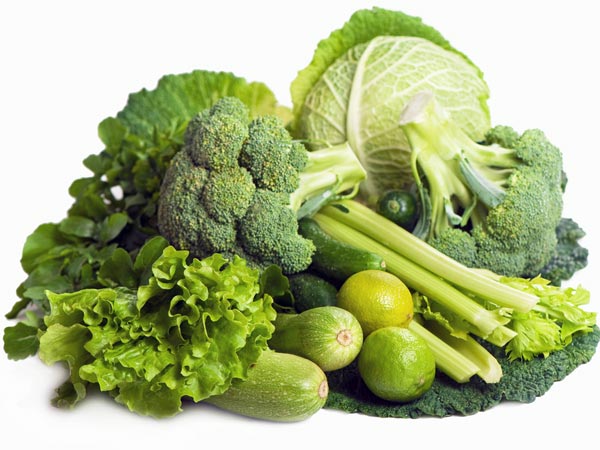Greens-Bright in Color and Packed with Nutrients
TEXARKANA, Ark. –
What makes green vegetables so healthy? They are packed with nutrients and phytochemicals—substances found only in plants which help fight diseases and improve health. Green vegetables contain lutein (pronounced LOO-teen), a powerful antioxidant found in green leafy vegetables that help maintain good vision.
Researchers are finding that once we near the age of 65, there is some degree of vision loss. We can help slow that process by eating green vegetables rich in lutein, which helps reduce the risk of cataracts and macular degeneration. One more reason to eat green vegetables every day.
Greens not only contain lutein, they are also excellent sources of vitamins C, A, and E. Vitamin C helps the body absorb iron by making it more soluble and helps the body produce collagen, which helps form connective tissue that keeps skin firm and healthy. One half cup of mixed greens contains 28 percent recommended daily intake (RDI) of vitamin C, and 41 percent RDI of vitamin A, which helps with night vision.
Vitamin E, found mainly in turnip and collard greens, functions as an antioxidant that helps prevent heart disease and aging. It works by inhibiting blood cells from clumping together which can block arteries and reduces damage caused by free radicals that destroy connective tissue.
When purchasing fresh greens, look for young tender leaves. Choose smaller leaves, 6 to 12 inches long. Older, larger leaves are likely to be too bitter. Greens should be fresh, tender crisp and of good green color. Avoid those with brown or yellow spots.
Greens are best used right after purchase. For best nutritional value, use within 1 to 2 days of purchase. Store unwashed greens in plastic bags in the coolest part of the refrigerator for 2 to 3 days. If stored longer, Vitamin C may be lost.
Many shy away from turnip greens because they feel they may be unsure about how to store and prepare them but it’s really not that difficult. Remove any rubber banding or ties to avoid damage. To wash greens, dip in salted water (one to 2 teaspoons salt per gallon of water) and lift from water. Rinse well and shake off excess water. If storing, spread on paper towels to dry.
Greens that are to be cooked before being added to a recipe can be steamed in a covered pot with only the water clinging to the leaves. One fourth cup water can be added if necessary.
To learn more about greens, contact the University of Arkansas System Division of Agriculture in Miller County at 400 Laurel, Suite 215, call 870-779-3609, or e-mail me at chadley@uada.edu. We will gladly mail Enjoy Arkansas’ Fresh Greens. You can also follow me on facebook.
Farm Fresh Collard Greens
|
1/4 cup olive oil 2 tablespoons minced garlic 5 cups chicken stock 1 smoked turkey drumstick 5 bunches collard greens, rinsed, trimmed and chopped |
|
Salt and pepper to taste
1 tablespoon crushed red pepper flakes
Heat olive oil in a large pot over medium heat. Add garlic; sauté lightly. Pour in chicken stock and add turkey leg. Cover the pot and simmer 30 minutes. Add the greens and turn heat to medium high. Let greens cook down for about 45 minutes, stirring occasionally. Reduce heat to medium and season with salt and pepper. Continue to cook until the greens are tender and dark green. Drain and reserve liquid. Mix in red pepper flakes. Use reserved liquid to reheat leftovers.
Small Steps for Better Health: Eating greens are a great way to increase the fiber in your diet.
By Carla Haley-Hadley
County Extension Agent - FCS
The Cooperative Extension Service
U of A System Division of Agriculture
Media Contact: Carla Haley-Hadley
County Extension Agent - FCS
U of A Division of Agriculture
Cooperative Extension Service
400 Laurel Street, Suite 215 Texarkana AR 71854
(870) 779-3609
chaley@uada.edu
The Arkansas Cooperative Extension Service is an equal opportunity institution. If
you require a reasonable accommodation to participate or need materials in another
format, please contact your County Extension office (or other appropriate office)
as soon as possible. Dial 711 for Arkansas Relay.
Pursuant to 7 CFR § 15.3, the University of Arkansas System Division of Agriculture
offers all its Extension and Research programs and services (including employment)
without regard to race, color, sex, national origin, religion, age, disability, marital
or veteran status, genetic information, sexual preference, pregnancy or any other
legally protected status, and is an equal opportunity institution.
